Quantum Simulation of Gauge Theories
Hersh Kumar, Henry Lamm, Neill Warrington, Yukari Yamauchi






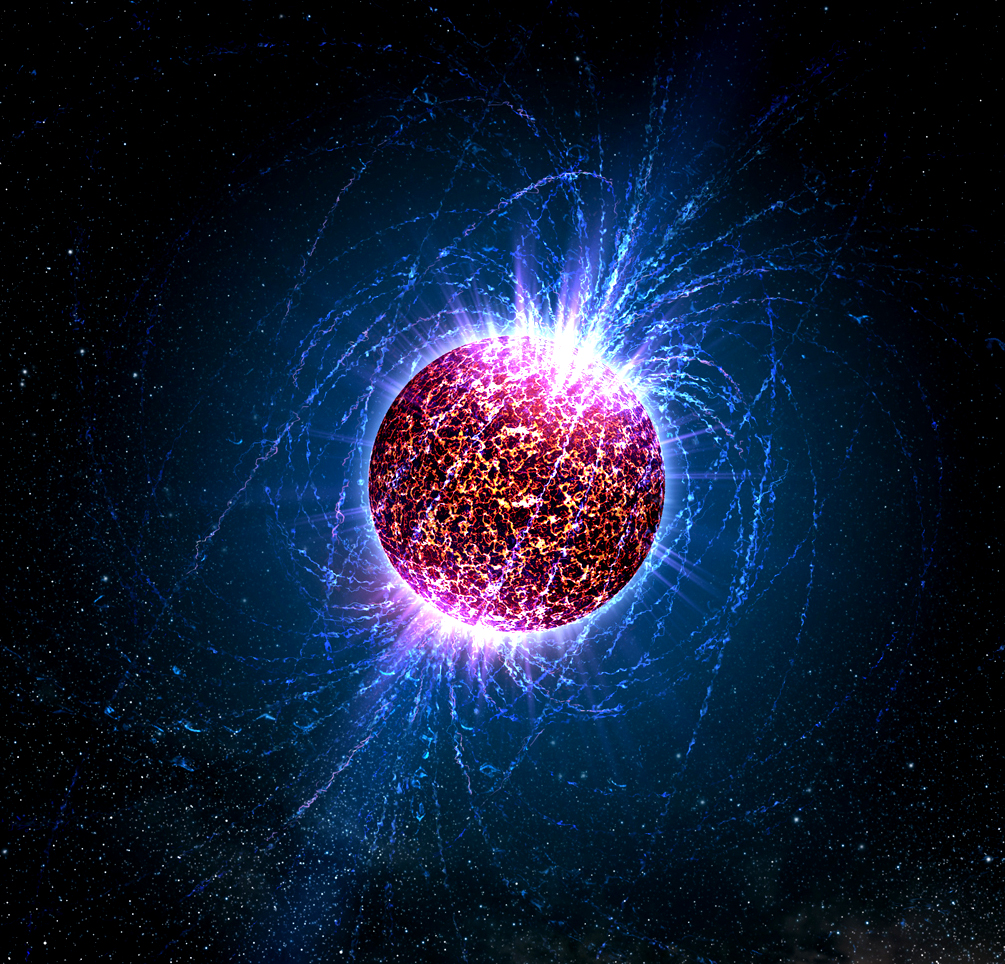
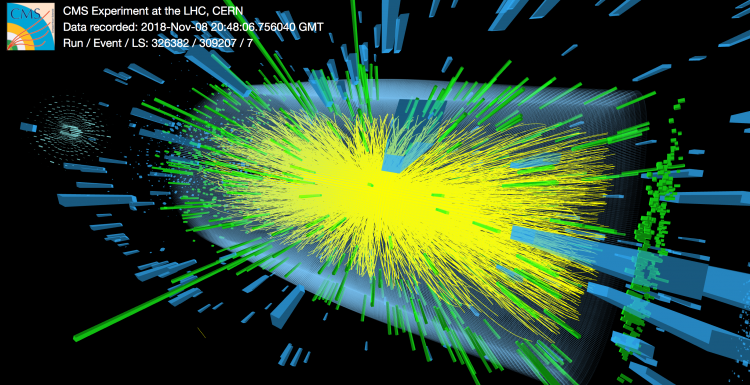
QCD is a non-perturbative theory. (There's no small parameter about which to Taylor expand.)
At every link lives a unitary matrix. $$ U_{yx} \in SU(3) $$
The action is a sum over all `plaquettes'. $$ S = \sum_P \mathrm{Re\,Tr\,} P $$
This is a theory of with a finite number of degrees of freedom. Expectation values are given by: $$ \left<\mathcal O\right> = \frac{\int \mathcal D U\;e^{-S[U]} \mathcal O[U]}{\int \mathcal D U\;e^{-S[U]}}$$
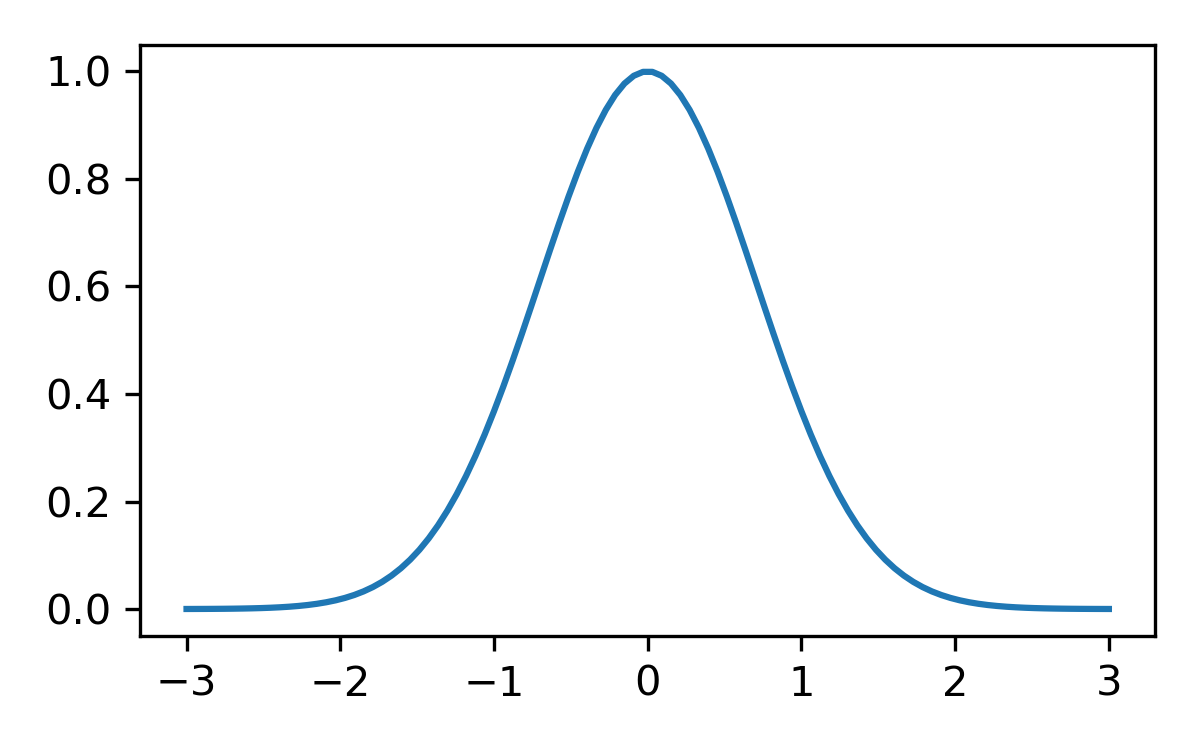 $$ \int f \approx 1 \pm 0.5$$
$$ \int f \approx 1 \pm 0.5$$
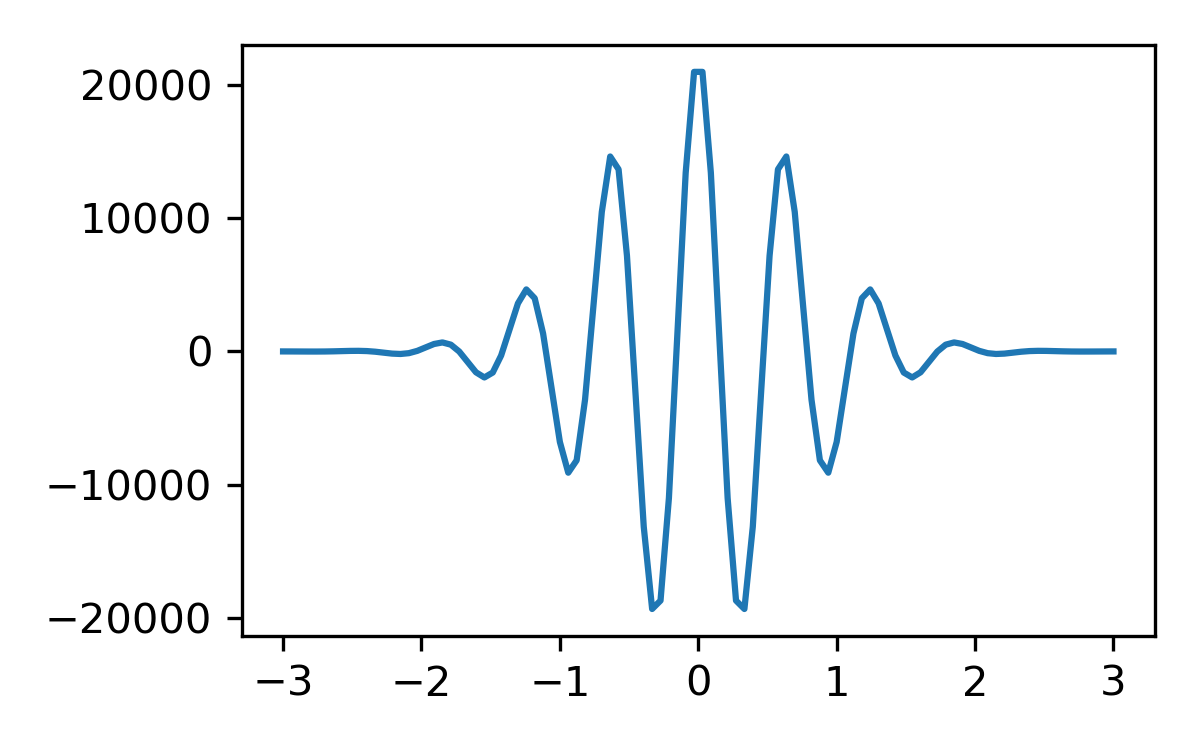 $$ \int f \approx 0 \pm 10^4 $$
$$ \int f \approx 0 \pm 10^4 $$
Calculations that have sign problems:
Closely related, but mild: determining the mass of a proton
Calculations without sign problems:
Set up an analogy between the quantum computer and the system to be simulated, and treat the computer like a (perfectly controlled) laboratory.
This is a spin from QM.
What's the Hilbert space? $$ \mathcal H = \mathcal H_1 \otimes \cdots \otimes \mathcal H_1 \;\text{ where } \mathcal H_1 = \mathrm{span}\{|0\rangle,|1\rangle\} $$
In other words, superpositions of all possible bitstrings. $$ \mathcal H = \mathrm{span}\{|00\cdots\rangle,|10\cdots\rangle,|01\cdots\rangle,\cdots\} $$
All operations must be unitary (conservation of probability). On one qubit:
On two qubits, the controlled-not operation:
These fundamental gates are sufficient to construct any unitary we want.
In principle, we measure any Hermitian operator. In practice, we measure \(\sigma_z\) acting on each qubit. $$\Psi = \alpha|0\rangle + \beta|1\rangle$$
Each measurement yields \(1\) or \(0\). Probability of \(1\) is \(\langle\Psi|1\rangle\langle 1|\Psi\rangle = |\beta|^2\).
Thus, we require many measurements for a precise result. This is "shot noise".
Hermitian operators are exactly those which may appear as terms in the Hamiltonian.
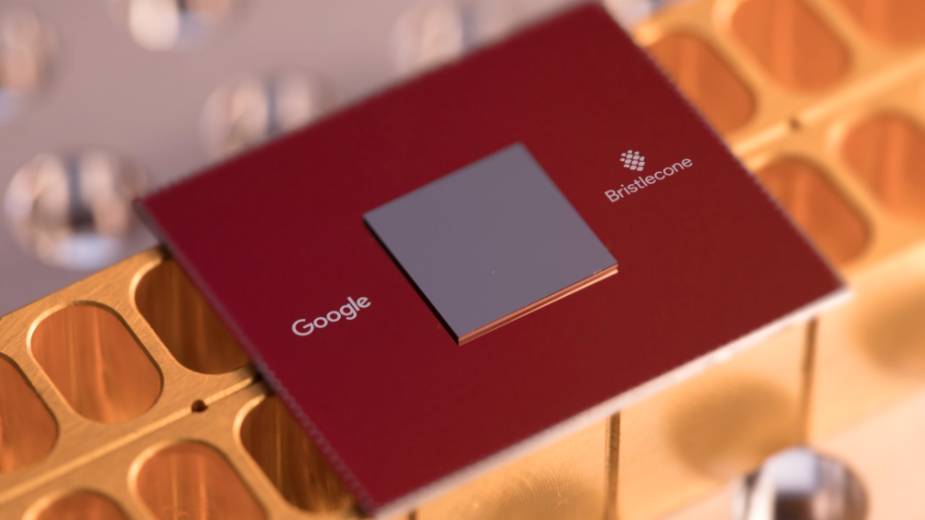
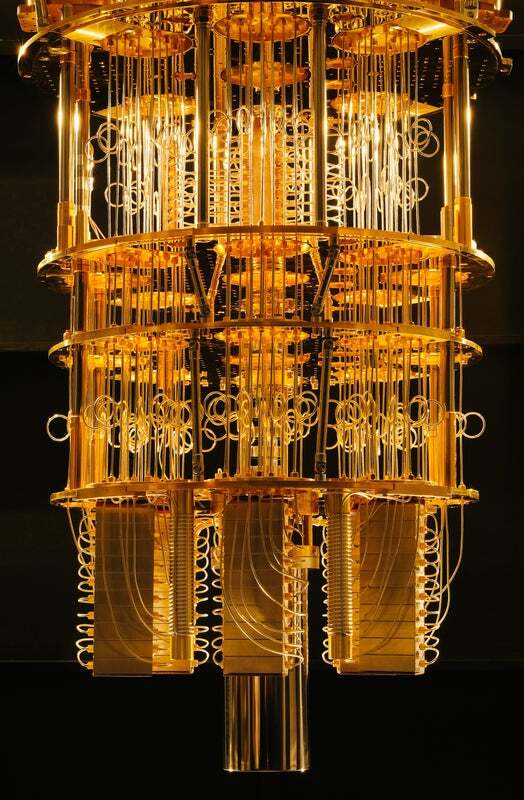
Current best: \(\sim 50\) qubits.
Each qubit can undergo \(\lesssim 10\) operations before decohering.
Are large processors worth it?
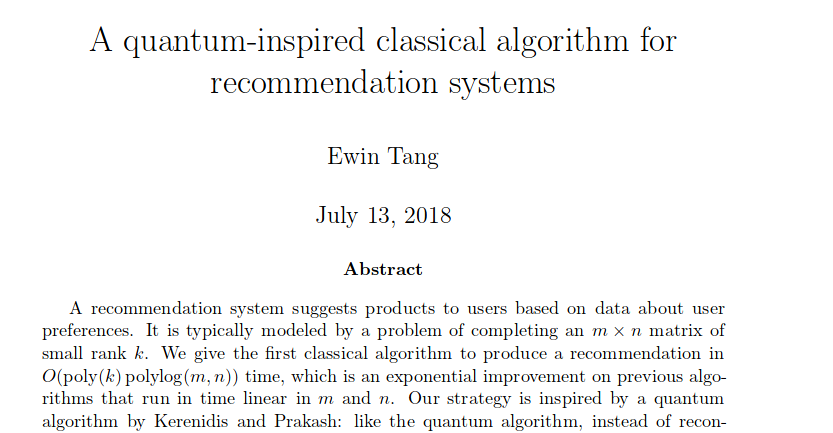
This restricts the set of possible operations, as well. We only have permutations:
Example: two-bit adder $$ \begin{align} |00\rangle |00\rangle &\rightarrow |00\rangle |00\rangle \\ |01\rangle |00\rangle &\rightarrow |01\rangle |01\rangle \\ |10\rangle |00\rangle &\rightarrow |10\rangle |01\rangle \\ |11\rangle |00\rangle &\rightarrow |11\rangle |10\rangle \\ \end{align} $$
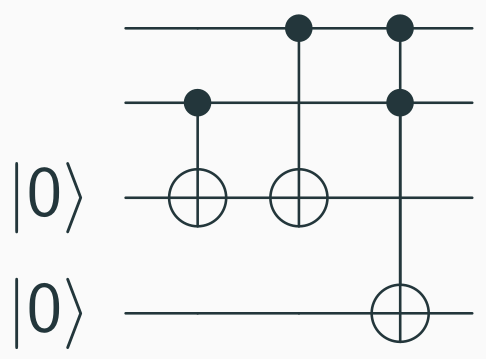
In general, given a classical circuit for \(f(x)\), we can obtain $$ |x\rangle|0\rangle \rightarrow |x\rangle |f(x)\rangle $$
Assume we can evolve under \(A\) and \(B\). How to get evolution under \(H\)? $$ e^{-i H \epsilon} \approx {\color{blue}e^{-i A \epsilon}} {\color{green}e^{-i B \epsilon}} $$
So, time-evolve by rapidly alternating between two Hamiltonians $$ e^{-i H t} \approx \left({\color{blue}e^{-i A \epsilon}} {\color{green}e^{-i B \epsilon}}\right)^{t / \epsilon} $$
Each lattice site has a degree of freedom with Hilbert space \(\mathcal H_1\). The whole system has Hilbert space $$ \mathcal H = \mathcal H_1 \otimes \mathcal H_1 \otimes \cdots $$
Some Hamiltonian \(H\) couples the different lattice sites. For a spin system, we might have $$ H = \sum_{\langle i j\rangle} \sigma_z(i) \sigma_z(j) + \sum_i \sigma_x(i) $$
When correlations are large, the lattice structure is irrelevant, hence "field theory".
The Hamiltonian of a free particle moving on \(G = SU(3)\): $$ H = -\nabla_\ell^2 $$
Hilbert space is \(\mathbb C G\), the space of complex functions on \(G\).
We can work with momentum eigenstates instead.

The Hamiltonian is gauge-invariant. $$ H = -\beta_K\sum_\ell \nabla_\ell^2 + \beta_P\sum_P \mathrm{Re\,Tr\,}P $$
Here's a projection operator: $$ P |U_{12}\cdots\rangle = \int(\mathrm{d}V_1 \mathrm{d}V_2\cdots)|(V^\dagger_2 U_{12} V_1)\cdots\rangle $$
Four states, naively: \(|00\rangle\), \(|01\rangle\), \(|10\rangle\), \(|11\rangle\). But these are not gauge-invariant!
Gauge transformation takes \(00 \leftrightarrow 11\) and \(01 \leftrightarrow 10\). $$ \color{green} |00\rangle + |11\rangle \;\text{ and }\; |01\rangle + |10\rangle $$
We need a mapping between the Hilbert spaces. Locality is nice. $$ \mathcal H_1 \leftrightarrow \mathcal H_1^{\mathrm{QC}} $$
This induces a "nice" map \(\mathcal H \leftrightarrow \mathcal H^{\mathrm{QC}}\)
Implement \(e^{-i H t}\) via Suzuki-Trotter
One link only
Diagonal in Fourier space
Mutually commuting terms
Four links
Diagonal (in our basis)
Mutually commuting terms
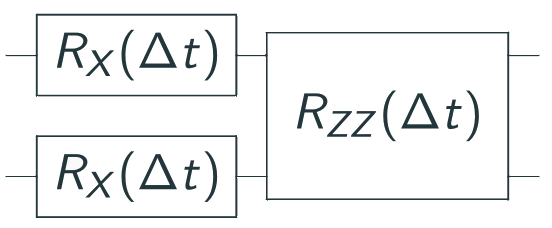
We'd like to simulate \(SU(3)\), but \(\mathbb C SU(3)\) is infinite-dimensional.
The physical Hilbert space is not \(\mathbb C S(1080) \otimes \mathbb C S(1080) \otimes\cdots\).
But, the Hilbert space on the quantum computer is isomorphic to that space!
If we start in a gauge-invariant state, we stay gauge-invariant.
When performing time evolution, we would like \( e^{-i H \Delta t} e^{-i H \Delta t} \cdots \), but instead we get: $$ \color{blue}e^{-i H \Delta t} \color{red} U_{\mathrm{drift}} \color{blue}e^{-i H \Delta t} \color{red} U_{\mathrm{drift}} \color{blue}e^{-i H \Delta t} \color{red} U_{\mathrm{drift}} \cdots $$
Suppress unphysical states with an energy penalty.
Define \( H_{\mathrm{gauss}} \) by:
and add \( H_{\mathrm{gauss}} \) to the Hamiltonian used for evolution.
Paths which pass through the unphysical subspace will pick up phase cancellations and be supressed.
We don't need to! We only need \( U_{\mathrm{gauss}} \sim e^{-i H_{\mathrm{gauss}} t} \)
At long times (equivalently, large energies), this gives each unphysical state a random phase. Approximate by performing a random gauge transformation. $$ e^{-i H \Delta t} \phi(g_0) e^{-i H \Delta t} \phi(g_1) e^{-i H \Delta t} \cdots $$
Each \(\phi(g)\) blesses an unphysical state with a random phase.

Inelastic scattering: need a \((4\;\mathrm{fm})^3\) box (at least). (See: Jordan, Lee, Preskill (2011).)
With a lattice spacing of \(0.1\;\mathrm{fm}\), that's \(2 \times 10^5\) links, or \( 2 \times 10^6\) qubits. Yikes!
What can we do with a small volume? Hydrodynamics
Early in a heavy-ion collision, temperature is \(\sim 300\;\mathrm{MeV}\); physics well-described by hydrodynamics. $$\def\d{\mathrm{d}} \rho \frac{\d u_i}{\d t} + \partial_i p = {\color{blue}\eta} \left(\frac 1 3 \partial_i \partial_j u_j + \partial_j^2 u_i \right) + {\color{blue}\zeta}\cdots $$
The fireball is small (\(\sim 10\;\mathrm{fm}\))! This is good for us: even smaller volumes might behave hydrodynamically.
EFT coefficients (shear viscosity, ...) not known from first principles.
Too cold? "Whack and wait".
Too hot? You're on your own.
Advantages: simple, cheap.
Can we go cheaper?
State preparation dominates the gate cost of the calculation.
Classical lattice methods are very good at simulating thermodynamics; can't do real-time.
Quantum computers simulate real-time evolution easily; thermodynamics can be expensive.
Boltzmann factor \(p_i \propto e^{-\beta E_i}\)
Partition function \(Z = \sum_i e^{-\beta E_i}\)
Expectation values \(\langle \mathcal O\rangle = \sum_i p_i \mathcal O_i\)
Density matrix \(\rho = e^{-\beta H}\)
Partition function \(Z = \mathrm{Tr\,}\rho\)
Expectation values \(\langle \mathcal O\rangle = Z^{-1} \mathrm{Tr\,} \mathcal O \rho\)
Several ways of turning \(\rho\) into a probability distribution to sample. We could take the diagonal $$ \langle \mathcal O \rangle = \frac{\sum_i \rho_{ii} \mathcal O_{ii}}{\sum_i \rho_{ii}} $$
Equality holds when \(\mathcal O\) is diagonal. (Common in lattice QCD.)
We want \(\langle \mathcal O(t)\rangle\); the operator isn't diagonal! $$ \langle \mathcal O(t)\rangle = \frac{\sum_{ij} \rho_{ij} \mathcal O(t)_{ji}}{\sum_{i}\rho_{ii}} = \left(\frac{\sum_{ij} \rho_{ij} \mathcal O(t)_{ji}}{\sum_{ij} \rho_{ij}}\right)\color{red}\underbrace{\left(\frac{\sum_{ij} \rho_{ij}}{\sum_{i} \rho_{ii}}\right)}_{\mathrm{Normalization}} $$
Therefore: sample pairs of states \(|i\rangle\langle j|\), distributed by \(\rho_{ij}\).
How to compute \(\mathcal O(t)_{ij}\)? This part is done on a quantum computer.
Preparing a basis state \(|i\rangle\) is cheap. Start with the states $$ |+\rangle = |i\rangle + |j\rangle\;\mathrm{ and }\; |-\rangle = |i\rangle - |j\rangle $$ and look at \(\langle + | \mathcal O(t) | +\rangle - \langle - | \mathcal O(t) | -\rangle\).
Even computing \(\rho_{ij}\) is hard! Turns out, sampling is easier: $$ \mathrm{Tr\,} e^{-\beta H} = \sum_{i,j,k,\ldots} \color{green}\left(e^{-\delta H}\right)_{ij} \left(e^{-\delta H}\right)_{jk} \cdots $$
For small \(\delta\), the summand is easily computed. This is a joint distribution over \((i,j,k,\ldots)\). Marginalized, it approximates \(\rho_{ii}\).
(Periodic boundary conditions)
(Open boundary conditions)
One step of time evolution requires \(O(V)\) operations.
With state prep, need to evolve for \(O(T + \Delta^{-2})\) steps.
Characteristically, \(\Delta \sim V^{1/3}\). Per measurement: $$ \color{red} O(V^{5/3}) $$
Without state prep, each quantum computation is now $$ \color{green} O(V T) $$
At the cost of needing to perform many more computations (sampling \(\rho\)).
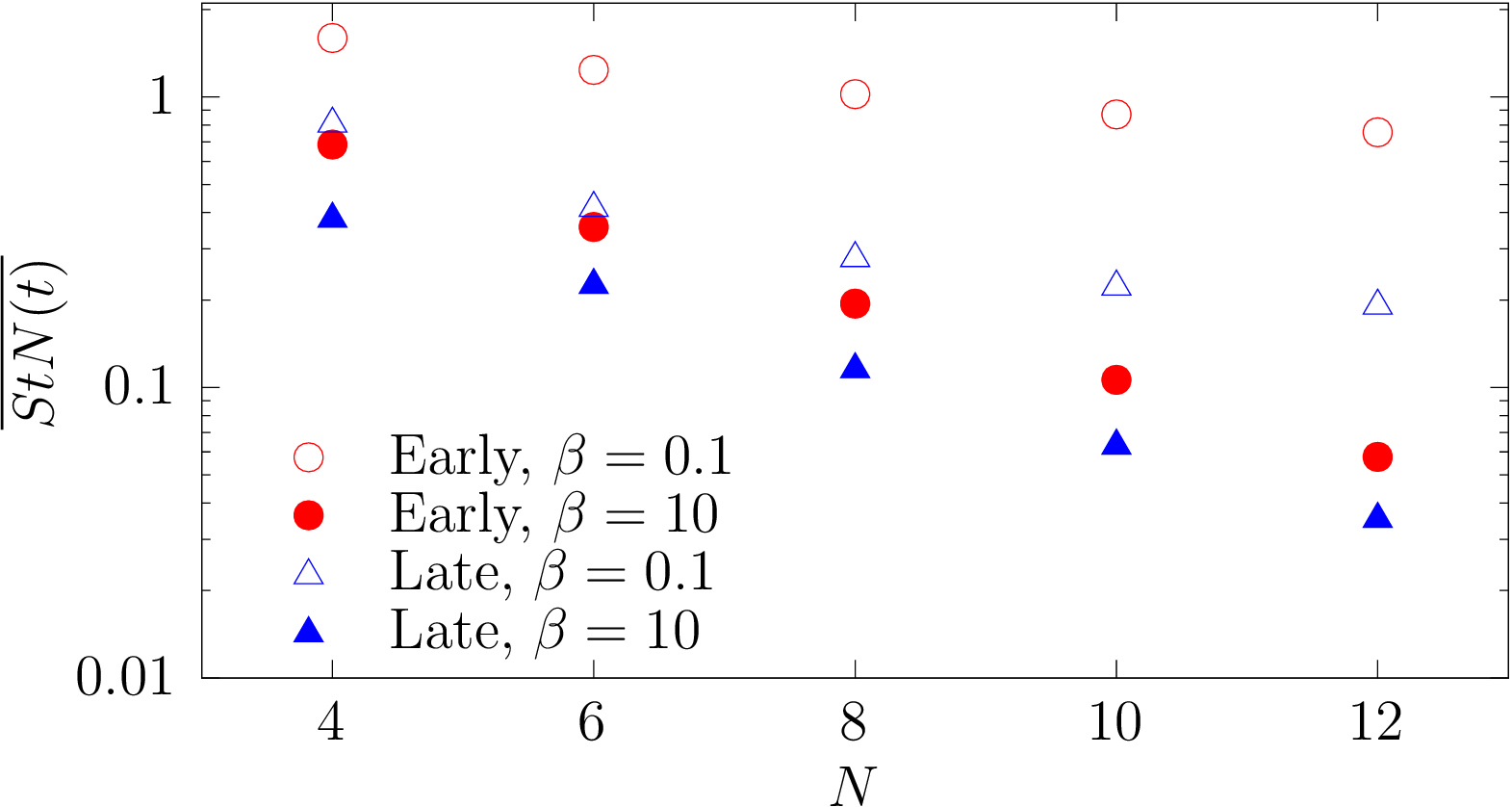
The QC calculation is shorter, but we need many of them.

(Discussed and endorsed by Hess (2001))
Finite-volume effects set by \(\ell_{\mathrm{mfp}} \sim 0.5\;\mathrm{fm}\). (Not trustworthy!)
Suggests box sizes with \(L \sim 1-2\;\mathrm{fm}\) sufficient!
With a lattice spacing of \(0.2\;\mathrm{fm}\), this is a \(5^3\) to \(10^3\) lattice.
Using Green-Kubo (\(T^{12}\) channel, there are no finite-volume effects in the \(N_C \rightarrow \infty\) limit of \(\mathcal N=4\) SYM. (This is a holography special.)
In the \(T^{01}\) channel, FV regulated by temperature. Again, the scale is \(\sim 1 \;\mathrm{fm}\).
Stay tuned...
All told, for \(3 + 1\) \(SU(3)\) Yang-Mills, \(\sim 4 \times 10^4\) qubits
For \(2 + 1\) \(SU(2)\) gauge theory, \(\lesssim 1500\) qubits
Hydrodynamics of a (strongly interacting) \(2+1\) spin model could be \(\sim 100\) qubits.